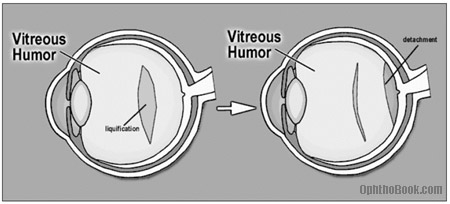What is a PVD?
A PVD is a posterior vitreous detachment. This is a common finding and the leading cause of visual “floaters.”
The inside of the eye is filled with a clear jello-like substance called the vitreous. This vitreous jello is clear of course (it would have to be in order to see), however, it has a gelatin consistency at birth. For example, if you take a young child’s eye and rupture it, the inner contents don’t dribble out like water, but come out like a grape.
As we age, this vitreous jelly tends to liquefy and get runny. Small particles of debris can form in the vitreous jelly, which in turn cast shadows on the underlying retina – which you see as black specks in your vision. The remaining jello can even pull away from the surface of the retina … if contraction occurs suddenly, the patient may see flashes of light of notice new floaters.

Most of the time, this event is completely harmless, with no ill effects upon the eye except for some new annoying floaters in the vision. However, sometimes the vitreous can pull on the retina and create a small hole or tear in the retinal tissue that can progress to an actual retinal detachment. Thus, patients with new flashes or floaters (usually a harmless PVD) warrant a dilated exam by an ophthalmologist to rule out retinal detachment.